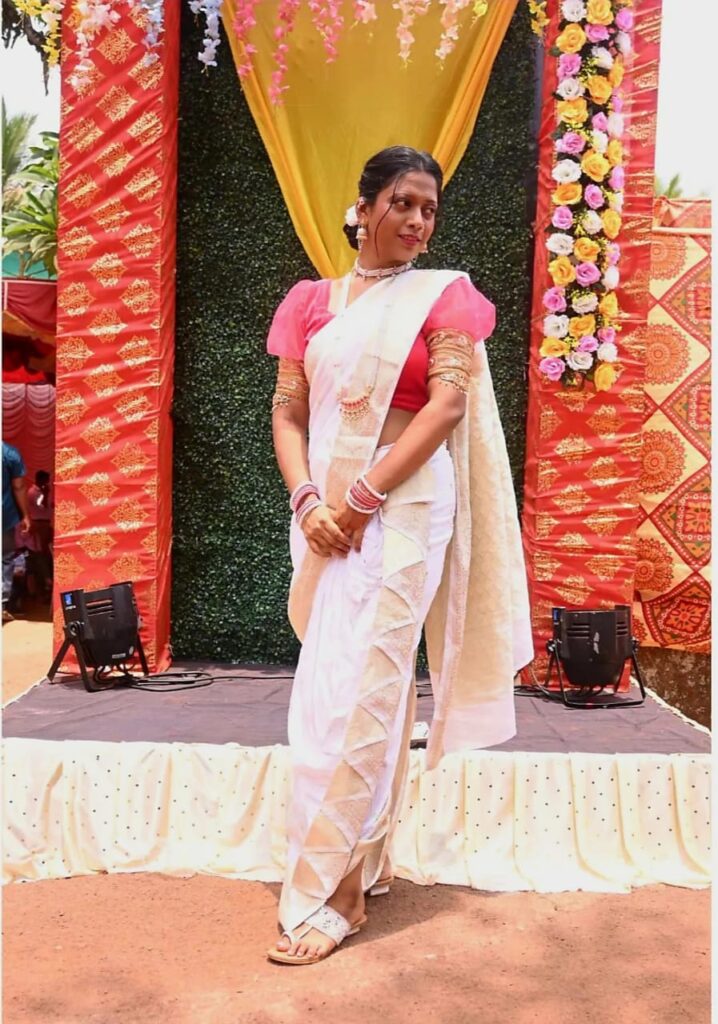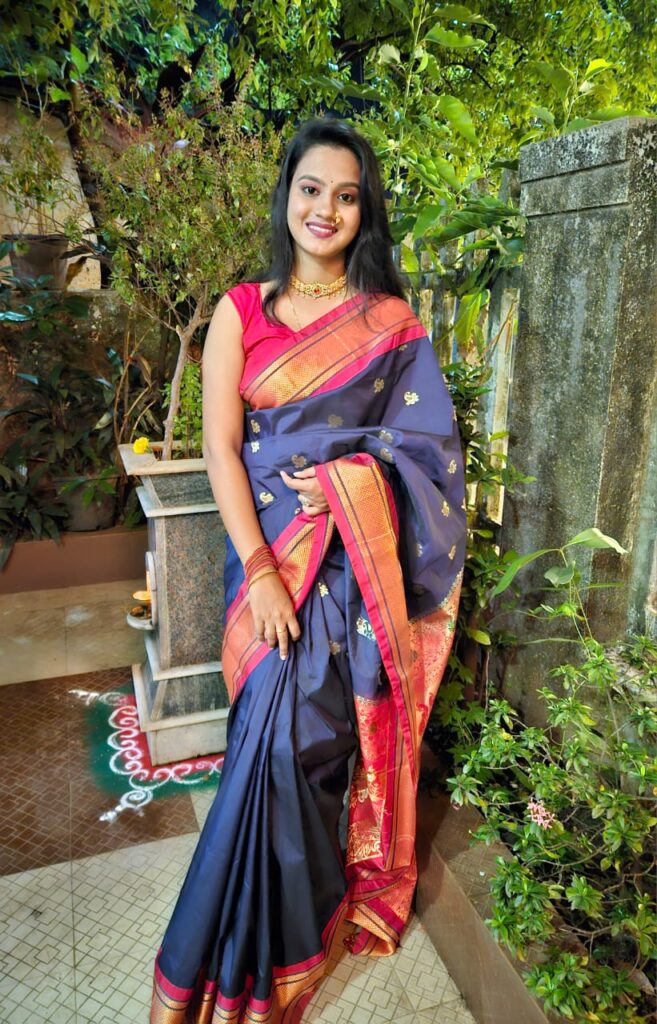SAREE
The saree is one of the oldest clothing items in the world, having been made more than 5,000 years ago. The word ‘saree’ itself is believed to have been derived from the Sanskrit word “sati,” meaning “a strip of cloth. yet it remains a symbol of beauty, tradition, and national pride. The saree is a traditional, adaptable garment that maintains its traditional value while adapting to new tastes in a world where trends in fashion come and go.
THERE ARE SOME TYPES OF SAREES.
The way a saree is draped is just as elegant as the silk itself. Different cultures and regions have unique draping styles that give the saree a unique flare. Among the most widely used draping designs are:
1. MAHARASHTRIAN SAREE:
Historically worn by women in the state, especially during festivals, weddings, and other ceremonial occasions, the Navvari saree originates firmly in Maharashtra. The name “Navvari” comes from the nine-yard length. Those sarees are draped in 19-17 centuries.
MATERIAL NEEDED: –
1. Saree (Traditional and cotton silk 9 yeards)
2. Petticoat
3. Blouse
4. Safety pins
SOME STEPS TO DRAPE NAVVARI SAREE:
A. WEAR LEGGINS AND BLOUSE: Wear leggings and a blouse. (Wear a Jari work blouse on a saree.)
B. TUCK THE SAREE AT THE WAIST: Tuck the saree at the right side of the waist. Depending on the saree’s length, wrap it around the waist.
C. Pleats in front: – Holding the saree cloth in the front, begin making pleats after you’ve finished the waist wrap. Create around 6 to 7 pleats by neatly folding 5 to 7 inches of fabric into each pleat. 2 pleats tuck the backside of the waist and crate a kashta.
D. PIN THE PALLU: – Make pleats and neatly aligned tuck the pin.

2. SOUTH INDIAN SAREE: –
A “South Indian saree” represents the different types of traditional sarees that women in the southern Indian states of Tamil Nadu, Karnataka, Kerala, Andhra Pradesh, and Telangana wear. Each state has its unique type of sarees, renowned for their rich textiles, elaborate patterns, and lovely draping techniques. South Indian sarees are often crafted from luxurious materials like silk and cotton and are typically worn during festivals, weddings, and special occasions.
MATERIAL NEEDED: –
1. Saree (Traditional and cotton silk 6 to 9 yeards)
2. Petticoat
3. Blouse
4. Safety pins
SOME STEPS TO DRAPE SOUTH INDIAN SAREE:
A. WEAR A PETTICOAT AND BLOUSE: – put on a well-fitted petticoat and blouse. petticoat preferably same the color as the saree. Petticoat tie tightly on your waist. (Wear a Jari work blouse on a saree.)
B. TUCK THE SAREE AT THE WAIST: -tuck the saree right side of the waist. Wrap the saree around the waist depending on your saree length.
C. Pleats in front: – Holding the saree cloth in the front, begin making pleats after you’ve finished the waist wrap. And other one wraps simpler style without pleats.
Create around 6 to 7 pleats by neatly folding 5 to 7 inches of fabric into each pleat.
D. PIN THE PALLU: – Make pleats and neatly aligned tuck the pin.

3. NIVI SAREE: A Nivi saree is a traditional saree drape in India, particularly in the south region. The Nivi style is known for its elegance and simplicity.
MATERIAL NEEDED: –
1. Saree (6 to 9 Yeard saree)
2. Blouse
3. Petticoat
4. Safety pins
SOME STEPS TO DRAPE NIVI SAREE:
A. WEAR A PETTICOAT AND BLOUSE: – put on a well-fitted petticoat and blouse. petticoat preferably matching the color of the saree. Petticoat tie tightly on your waist.
B. TUCK THE SAREE AT THE WAIST: -tuck the saree right side of the waist. Wrap the saree around the waist depending on your saree length.
C. Pleats in front: – Holding the saree cloth in the front, begin making pleats after you’ve finished the waist wrap.
Create around 6 to 7 pleats by neatly folding 5 to 7 inches of fabric into each pleat.
Make sure the pleats fall straight down without being very wide or small, and that they are all the same width.
D. Tuck the pleats into the petticoat: – Gather the pleats together and tuck them into the petticoat on the slightly left of the novel. Make sure the pleats are aligned and neat.
E. PIN THE PALLU: – Use a safety pin to secure the pallu on the left shoulder. Adjust the length of the pallu to ensure hanging gracefully without dragging in the ground.

